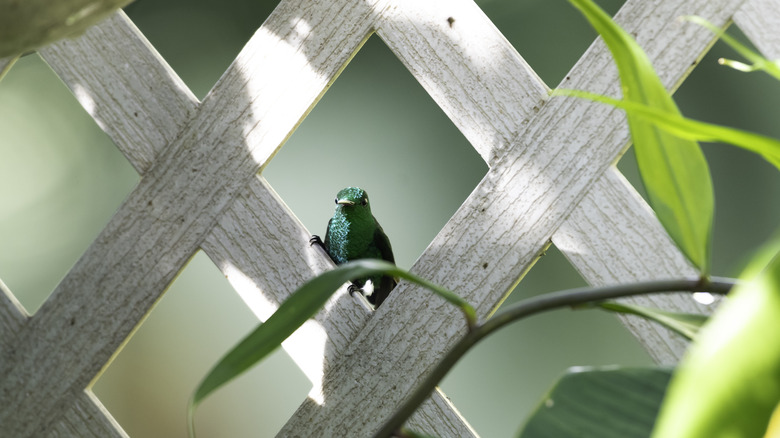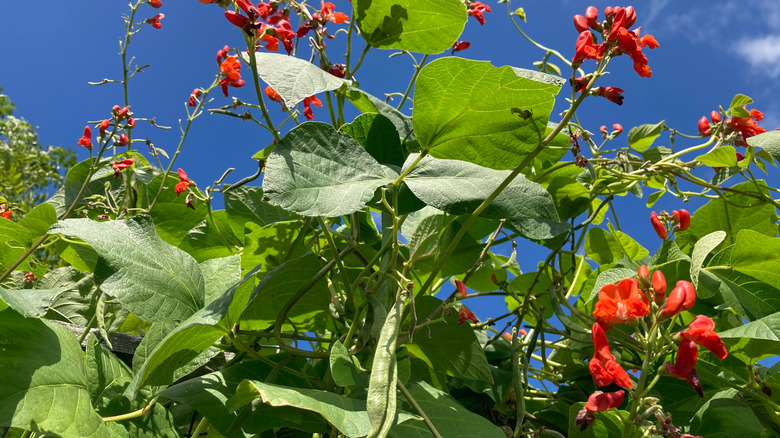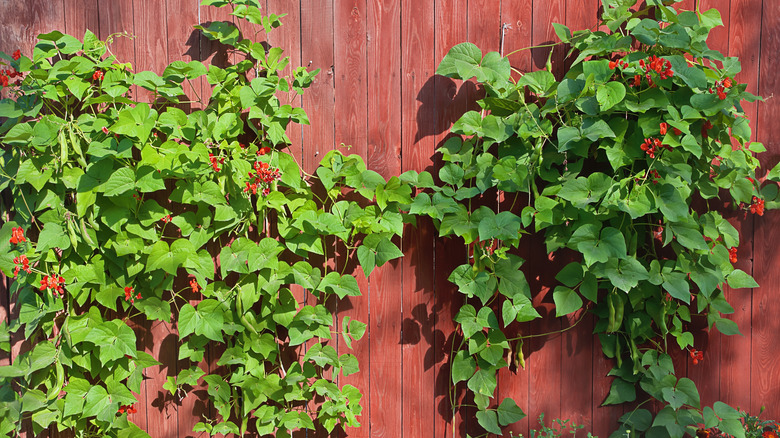Beautify Your Fence With A Trailing Red-Flowering Vine Hummingbirds Love
Fences provide privacy and protection, but they can be a sore spot for the eyes in a garden. You have all this lush greenery dotted with colorful flowers and vegetables, and then you have a blank spot, somehow drawing attention away from everything else. Use this blank canvas as a trellis for the scarlet runner bean, Phaseolus coccineus, to make the space as beautiful as it is useful, and you don't have to worry about it growing out of control. Scarlet runner beans are a magnet for hummingbirds, as well as bees and butterflies. Unlike other bean plants, this one is so beautiful that many people grow it for ornamental purposes and harvest the beans as they appear to encourage more blooms. However, you can still get plenty of blooms even if you allow the beans to mature for harvesting.
Hummingbirds enjoy a variety of flowers, but they are typically attracted to warm tones like red and orange. You can grow scarlet runner beans in ornamental and vegetable gardens to draw in more hummingbirds. The more flowers you have nearby, the higher your chances are of making your garden a frequent stop for your winged friends.
Grow scarlet runner beans for hummingbirds
Scarlet runner beans are easy to grow in the appropriate climate. They're ideal for USDA zones 7 to 11, where winters are mild, though they prefer cool summers since hot temperatures slow down flower production. They're perennials in Central America and Mexico, where they're native, but in the US and elsewhere, they're short-lived perennials or annuals. They have tuberous roots you can dig up and store indoors over winter and replant in the spring; doing so may reward you with earlier blooms the following year. These bean plants have edible flowers, so if you enjoy the flavor, they don't just have to go to the hummingbirds.
The best way to start scarlet runner beans is outdoors after all dangers of frost have passed and the soil is consistently 50 degrees Fahrenheit or warmer. The beans can be started indoors several weeks before the last frost date, but plants generally do better when directly sown outside. The plants need fertile loamy soil that is consistently moist, and access to at least six hours of sunlight daily. Vines will typically reach up to 8 feet long, though it's possible for them to grow longer if the conditions are right. Remove bean pods as soon as possible to encourage more flowers if you're raising the plant for ornamental purposes. For those who want to eat the beans, pick them as soon as they're ripe; the plant will grow more flowers the sooner the beans are picked.
Why scarlet runner beans are a great choice
Many climbing plants can take over your walls, but the scarlet runner bean won't do that, thanks to its growth habit. It will die back once temperatures turn frosty, giving you time to remove dead vines and grow something else through winter. Since the plant dies back each year, you won't have to wrestle with persistent vines that have become cumbersome over time. If you're short on space, several dwarf varieties grow as bush beans, including "Hammond's Dwarf" and "Pickwick Dwarf".
Not only are scarlet runner beans agreeable in the garden, but they're just what hummingbirds need. These speedy birds require flower nectar for happy and healthy lives, though they do get a fair share of their nutrients from insects and sugar water provided by thoughtful gardeners. Hummingbirds have better sight than vision, so while scented flowers won't get their attention, bright hues will. They seem to respond best to pink, orange, and red flowers. Most varieties of scarlet runner beans are red, but they're also available in pink and white, so you have several options to choose from to attract more hummingbirds to your garden. These birds also need flowers available from spring until fall, and if you stay on top of bean harvesting, you can get these plants to last for most of the summer, if not longer, allowing you to provide plenty of food for hummingbirds throughout the year.


